Papers by Nikolai Ermakov
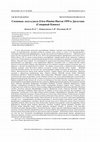
Ekosistemy, 2020
The paper represents the results of grass pine forests classification in Dagestan by the Brown-Bl... more The paper represents the results of grass pine forests classification in Dagestan by the Brown-Blanquet method. A number of 68 releves of pine forests (taken from the paper by Abdurakhmanova et al., 2018) were included in two higher categories of vegetation – the boreal forests of the class Vaccinio–Piceetea Br.-Bl. in Br.-Bl. et al. 1939 and the sub-Mediterranean thermophilous forests of the class Erico–Pinetea Horvat 1959 based on the quantitative classification. Comparative syntaxonomic analysis of the Caucasian communities of the Erico–Pinetea class revealed their high level of floristic originality in comparison with similar forests of southern Europe, Western Asia and Crimea. This corresponds to the unique bioclimatic conditions of Dagestan located on the territory with a clear effect of «rain shadow» from the high mountain ranges of the Greater Caucasus stretching on the way of the western Atlantic moist air masses that result in the high climate continentality. These essenti...
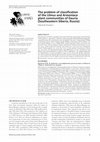
Botanica Pacifica, 2018
Classification of hemi-xerophilous low tree and shrub communities dominated by Ulmus pumila, U. m... more Classification of hemi-xerophilous low tree and shrub communities dominated by Ulmus pumila, U. macrocarpa, Armeniaca sibirica using the Braun-Blanquet ap proach was performed. All communities were included in the class Ulmetea pumilae Hilbig et Narantuya 2016, order Ulmetalia pumilae Hilbig et Narantuya 2016, alliances Ulmion pumilae Mirkin et al. ex Hilbig 2000, Spiraeo pubescentis-Ulmion macrocarpae all. nova hoc loco and associations Sambuco manshuricae-Ulmetum macrocarpae ass. nova hoc loco, Spiraeo pubescentis-Ulmetum macrocarpae ass. nova hoc loco, Menispermo daurici-Ulmetum pumilae ass. nova hoc loco и Ulmo pumilae-Armeniacetum sibiricae ass. nova prov. Ecological peculiarities and differences of new associations and alliance were demonstrated in results of DCA ordinations. An original approach for classification of hemi-xerophilous types of low trees and shrubs communities with transitional floristic-phytocoenotic features based on the physiognomу as a main criterion for the higher syntaxonomis category establishment is proved.
Botanica Pacifica, 2023
Validation and description of new syntaxa of the boreal light coniferous forests of North Asia in... more Validation and description of new syntaxa of the boreal light coniferous forests of North Asia in the Braun-Blanquet system was carried out in accordance with the latest 4th edition of the International Code of Phytosociological Nomenclature. These are the alliance Ledo palustris–Laricion cajanderi Ermakov all. nov. and the order Ledo palustris–Laricetalia cajanderi Ermakov ord. nov. For all these syntaxa, the diagnostic species, peculiarities of ecology and phytocenotic structure, as well as geographical area are indicated. Prodromus of the validated order Ledo palustris–Laricetalia cajanderi is presented.
Растительность России, 2008
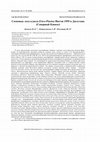
Èkosistemy, 2020
В статье представлены результаты классификации травяных сосновых лесов Дагестана методом Браун-Бл... more В статье представлены результаты классификации травяных сосновых лесов Дагестана методом Браун-Бланке. 68 геоботанических описаний сообществ сосновых лесов, взятых из статьи З. И. Абдурахмановой с соавторами (2018) были классифицированы в составе двух высших категорий растительности-бореальных лесов класса Vaccinio-Piceetea Br.-Bl. in Br.-Bl. et al. 1939 и суб-средиземноморских термофильных лесов класса Erico-Pinetea Horvat 1959 на основе количественной классификации. Сравнительный анализ кавказских сообществ класса Erico-Pinetea выявил их высокий уровень флористического своеобразия по сравнению с подобными лесами Европы, Западной Азии и Крыма. Это подтверждается уникальными биоклиматическими условиями Дагестана, расположенного на территории с четко выраженным эффектом «дождевой тени» со стороны высоких горных хребтов системы Большого Кавказа, простирающихся на пути переноса западных влажных воздушных масс, что приводит к высокой континентальности климата. Эти важные экологические и флористические особенности травяных сосновых лесов Восточного Кавказа послужили основой описания нового порядка-Alchemillo sericaceae-Pinetalia sylvestris ord. nova hoc loco, представляющего крайне восточную часть ареала класса Erico-Pinetea. Диагностическая группа видов порядка включает главным образом восточно-эвксинские, кавказские эндемики и евразиатские ксерофильные виды: Juniperus oblonga, Alchemilla sericata, Galium valantioides, Peucedanum ruthenicum, Thalictrum foetidum, Rosa elasmacantha, Filipendula vulgaris, Koeleria cristata, а также диагностические виды подчиненных союзов. Порядок включает два союза демонстрирующих экологические и флористические различия Дагестанских сосновых лесов в результате влияния фактора теплообеспеченности. Союз Bupleuro polyphylli-Pinion sylvestris all. nova hoc loco (holotypus of the order) включает травяные сосновые леса с преобладанием теплолюбивых флористических элементов. Дифференциальными видами союза являются Astrantia

Растительность России, 2008
Classification of pine forests of sandy deposits in the Minisinskaya intermountain basin (souther... more Classification of pine forests of sandy deposits in the Minisinskaya intermountain basin (southern Siberia) has been performed according to the Braun-Blanquet approach. All communities represent 3 classes, 3 orders, 4 alliances, 4 suballiances, 9 associations and 9 variants. The class Brachypodio pinnati—Betuletea Ermakov et al. 1991 (order Carici macrourae—Pinetalia sylvestris Ermakov et al. 1991) includes associations: Carici shmidti—Betuletum pendulae ass. nova hoc loco, Equiseto sylvaticae—Pinetum sylvestris ass. nova hoc loco, Veronico chamaedrythis—Pinetum sylvestris ass. nova hoc loco, Cimicifugo foetidae—Pinetum sylvestris ass. nova hoc loco. The class Vaccinio-Piceetea Br.-Bl. in Br.-Bl., Siss. et Vlieger 1939 (order Cladonio-Vaccinietalia Kielland-Lund 1967) includes associations: Oxytropido campanulatae—Pinetum sylvestris ass. nova hoc loco, Ptilio crista-castrensis—Pinetum sylvestris ass. nova hoc loco. The class Rhytidio—Laricetea sibiricae Korotkov et Ermakov 1999 includes associations: Artemisio commutatae—Pinetum sylvestris ass. nova hoc loco and Euphrasio pectinatae—Pinetum sylvestris ass. nova hoc loco. Diagnostic features of the higher units and peculiarities of classification approach for vegetation of azonal habitats are discussed.
Растительность России, 2009
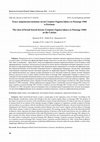
Проблемы ботаники Южной Сибири и Монголии, Nov 17, 2022
Реферат. Центральное место в лесном покрове Колхиды занимают влажные широколиственные леса, котор... more Реферат. Центральное место в лесном покрове Колхиды занимают влажные широколиственные леса, которые в соответствии с системой классификации Браун-Бланке относятся в состав класса Carpino-Fagetea Jakucs ex Passarge 1968. Цель исследования-представить обзор классификации влажных широколиственных лесов Колхиды в виде сформированного конспекта синтаксонов всех рангов на основе анализа концепций категорий, принятых в настоящее время на территории Европы и Передней Азии. Выполнен анализ современного состояния классификации влажных широколиственных лесов Колхиды (Западный Кавказ) и сформирован Продромус синтаксонов, отражающий существующие концепции высших категорий, принятые на территории Европы и Передней Азии. Фоновые влажные широколиственные леса, широко распространенные во всех высотных подпоясах горной системы Западного Кавказа, относятся в класс Carpino-Fagetea sylvaticae Jakucs ex Passarge 1968, содержащий 2 порядка 5 союзов и 25 ассоциаций. В существующей концепции данного класса на уровне единиц союзов-порядков отражены наиболее крупные высотно-поясные закономерности разделения пояса широколиственных лесов на два подпояса: верхний-буковые леса порядка Rhododendro pontici
Бюллетень Государственного Никитского ботанического сада, May 14, 2021
Сборник научных трудов, Jan 11, 2021
Выполнен обзор классификации сосновых лесов (в ко торых доминируют дву хиго льчатые сосны подрода... more Выполнен обзор классификации сосновых лесов (в ко торых доминируют дву хиго льчатые сосны подрода Diploxylon) России с использованием подхода Браун-Бланке. Всё разнообразие сосновых лесов включено в 9 высших категорий-классов растительности, из которых 3 класса представляю т
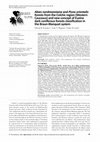
Botanica Pacifica, 2022
A classification system of the Colchic spruce-fir forests (the Western Caucasus) was developed us... more A classification system of the Colchic spruce-fir forests (the Western Caucasus) was developed using the Brawn-Blanquet method. Two new associations Dryo pte rido caucasicae-Abietetum nordmannianae ass. nov., Pruno laucerasi-Abietetum nord man nia nae ass. nov. and new alliance Dryopterido caucasicae-Abietion nordmannianae all. nov. were proposed after the comparative syntaxonomic analysis of dark coniferous forests from the Euxine province. Diagnostic species of the alliance are Acer pseudo platanus, Actaea spicata, Athyrium filix-femina, Dentaria bulbifera, Dryopteris car thu si ana, D. filix-mas, Fagus orientalis, Geranium robertianum, Gymnocarpium dryopteris, Im pa tiens nolitangere, Oxalis acetosella, Paris incompleta, Polystichum aculeatum, Ranuncu lus grandiflorus, Rubus caucasicus, Salvia glutinosa, Symphytum grandiflorum. All described Col chic associations and alliance were placed in the order Abieti nordmannianae-Picee talia orientalis Coban et Willner 2019 and the class Asaro europaeai-Abietetea si bi ricae Ermakov et al. in Willner et al. 2016 uniting West Palearctic dark coniferous subnemoral forests from Europe,
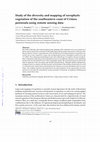
The study of diversity and ecological-phytocenotic mapping of the vegetation cover was carried ou... more The study of diversity and ecological-phytocenotic mapping of the vegetation cover was carried out at the key area located in the eastern part of the Echki-Dag mountain range in the territory of the Lisya Bay Reserve (Eastern Crimea). A generalization of the classification and ecological patterns of vegetation was carried out to create a legend for a large-scale ecological-phytocenotic cartographic model (at the scale of 1:10000). The ecological-geomorphological series and combinations of xerophytic and mesoxerophytic plant communities indicating erosion-denudation processes on different substrates of the underlying parent rocks were the thematic basis of the cartographic model. The developed legend is based on the units of vegetation of the association rank obtained using the Braun-Blanquet method combined into ecological series in accordance with their position on the gradients of the leading ecological factors as well as on the hierarchy of phytochories determined by the categories of erosion-denudation relief of coastal slopes. The resulting vegetation map demonstrates the main regularities of the regional phyto-diversity and serves as the basis for assessing the resource potential of vegetation, its landscape-stabilizing and nature conservation value.
Растительность России, 2022

Abstracts of the conference "Plants in the monsoonal climate - IX: Plant systems under the global change. ", 26.06.2022 - 01.07.2022, Vladivostok, Russia
Систематизация и инвентаризация растительных сообществ (фитоценозов) — это фундаментальная основа... more Систематизация и инвентаризация растительных сообществ (фитоценозов) — это фундаментальная основа для изучения и прогнозирования современных сложных процессов в биосфере, в том числе и в результате глобальных изменений климата. Созданная система классификации растительности обеспечивает взаимодействие специалистов различных областей знания при решении экологически ориентированных задач устойчивого развития от регионального уровня до биосферного. При этом категории растительности выступают надежными индикаторами естественных и антропогенных процессов на Земном шаре и играют фундаментально основополагающую роль при оценке и прогнозном моделировании состояния биоты. С 2019 года инициативной группой из специалистов-геоботаников институтов РАН и университетов начата реализация масштабного проекта «Создание Национальной классификации растительности России», целью которого является разработка и представление в монографическом издании системы классификации растительности России, отражающей ...
Biology Bulletin Reviews, 2017
⎯An ecological ordination model of higher units of steppe vegetation in the mountains of the sout... more ⎯An ecological ordination model of higher units of steppe vegetation in the mountains of the southern Middle Siberia was created based on indirect ordination (detrended correspondence analysis) of 326 complete geobotanical descriptions and on a correlation analysis of the values of main axes with climatic, soilground, and geographical parameters. Ecological series of coenofloras of the steppe vegetation are observed in the space of the two first leading axes of ordination. They are oriented by climatic factors of the annual and seasonal precipitation amounts, temperature, oceanity-continentality, and substrate rockiness. A syntaxonomic interpretation of the observed ecological-geographical steppe types is given, and a hierarchy of higher classification units is substantiated from ecological positions.
Russian Journal of Ecology, 2015
A bioclimatic model for higher units of forest vegetation in the mountains of southern Central Si... more A bioclimatic model for higher units of forest vegetation in the mountains of southern Central Siberia has been developed based on ordination of 560 complete geobotanical releves and correlation analysis between the main-axis values and climatic parameters. The ecogeographic series of communities arranged along the main axes throw light on specific features of the determinative influence of the vertical zonality of climate and its cyclonic (oceanic)–continental regime on the spatial structure of forest vegetation in different geographic sectors of the mountain system.
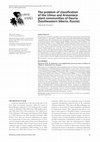
Botanica Pacifica, 2018
Classification of hemi-xerophilous low tree and shrub communities dominated by Ulmus pumila, U. m... more Classification of hemi-xerophilous low tree and shrub communities dominated by Ulmus pumila, U. macrocarpa, Armeniaca sibirica using the Braun-Blanquet ap proach was performed. All communities were included in the class Ulmetea pumilae Hilbig et Narantuya 2016, order Ulmetalia pumilae Hilbig et Narantuya 2016, alliances Ulmion pumilae Mirkin et al. ex Hilbig 2000, Spiraeo pubescentis-Ulmion macrocarpae all. nova hoc loco and associations Sambuco manshuricae-Ulmetum macrocarpae ass. nova hoc loco, Spiraeo pubescentis-Ulmetum macrocarpae ass. nova hoc loco, Menispermo daurici-Ulmetum pumilae ass. nova hoc loco и Ulmo pumilae-Armeniacetum sibiricae ass. nova prov. Ecological peculiarities and differences of new associations and alliance were demonstrated in results of DCA ordinations. An original approach for classification of hemi-xerophilous types of low trees and shrubs communities with transitional floristic-phytocoenotic features based on the physiognomу as a main criterion for the higher syntaxonomis category establishment is proved.
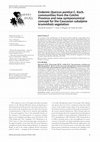
Botanica Pacifica, 2020
As a result of the classification of the Quercus pontica endemic communities from the Western Cau... more As a result of the classification of the Quercus pontica endemic communities from the Western Caucasus and subsequent comparative analysis with published data, we described new syntaxa and revised the existing concept of Caucasian krummholz higher units. The Rhododendro lutei-Quercetum ponticae ass. nova hoc loco, Corylo avellanae-Quercetum ponticae ass. nova hoc loco and Querco ponticae-Betuletum medwediewii Eminagaoglu et al. 2006 were united into the Quercion ponticae all. nova hoc loco. The Senecioni-Betuletum litwinowii Onipchenko 2002 and Astrantio-Betuletum litwinowii Sokolova ex hoc loco were united in the Acero trautwetteri-Betulion litwinowii all. nova hoc loco. Both alliances were included into the order Acero trautvetteri-Betuletalia litwinowii ord. nova hoc loco, the class Betulo-Alnetea viridis Rejmanek ex Boeuf et al. 2014. The order Rhododendro caucasicae-Betuletalia litwinowii Mucina 2016 (and alliance Rhododendro-Betuletalia litwinowii Onipchenko 2002) should be assigned to the class Vaccinio-Piceetea Br.-Bl. in Br.-Bl. et al. 1939.







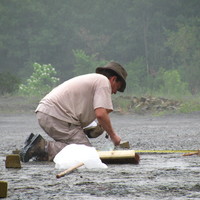



Uploads
Papers by Nikolai Ermakov